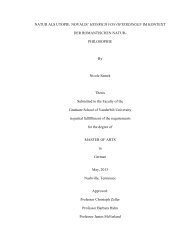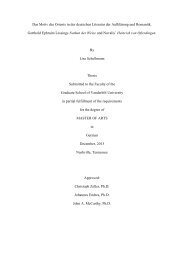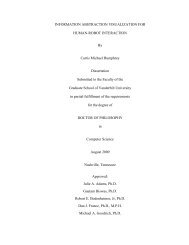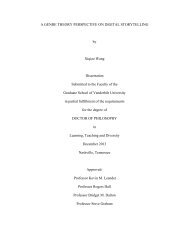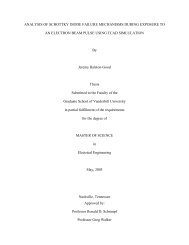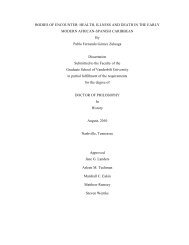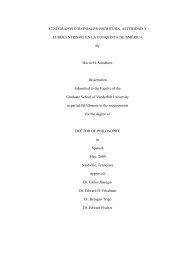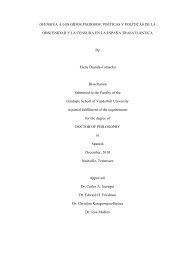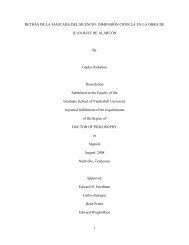EVIDENCE OF ACCRETION-GENERATED X-RAYS IN THE YOUNG ...
EVIDENCE OF ACCRETION-GENERATED X-RAYS IN THE YOUNG ...
EVIDENCE OF ACCRETION-GENERATED X-RAYS IN THE YOUNG ...
You also want an ePaper? Increase the reach of your titles
YUMPU automatically turns print PDFs into web optimized ePapers that Google loves.
3.2 The Chandra X-ray Observatory<br />
Launched from the Space Shuttle Columbia on July 23, 1999, the 45-foot long<br />
Chandra X-ray Observatory (CXO) is an orbiting X-ray telescope and the third of<br />
NASA’s four “Great Observatories.” CXO (Fig. 9) is named after Subrahmanyan<br />
Chandrasekhar, the Nobel prize-winning physicist most noted for first calculating the<br />
mass limit of a white dwarf. Chandra’s rather eccentric orbit takes it into a high Earth<br />
orbit, putting it above the Van Allen belts for most of its 64.3-hour orbital period and<br />
allowing for roughly 55 hours of continuous observation time. The Chandra X-ray<br />
Observatory is unique in that it has the highest spectral and spatial resolutions thus<br />
far of any orbiting X-ray observatory – up to 0.012˚A (or 1 eV) at Full Width Half<br />
Maximum (FWHM) and up to to 0.5 00 at FWHM, respectively. Chandra’s spectral<br />
range is 0.3–10 keV, and though other X-ray observatories such as XMM-Newton<br />
provide a wider calibrated spectral energy range, they have a lower spectral resolution.<br />
The Chandra X-ray Observatory has a suite of instruments and components, including<br />
the High Resolution Mirror Assembly (HRMA), the High Resolution Camera (HRC),<br />
the Advanced CCD Imaging Spectrometer (ACIS), and the Low- and High-Energy<br />
Transmission Gratings (LETG/HETG), which allow it to make a number of various<br />
types of X-ray observations.<br />
33



